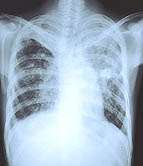(HealthDay)—Hypovitaminosis D is associated with tuberculosis infection in children, according to a study presented at the annual meeting of the European Society for Paediatric Infectious Diseases, held from May 6 to 10 in Dublin.
Elisabetta Venturini, M.D., from the University of Florence in Italy, and colleagues examined serum vitamin D levels in children with latent and active tuberculosis in a multicenter observational study conducted in three pediatric centers in Italy and the United Kingdom. Participants included 996 children screened for tuberculosis who had undergone vitamin D measurements.
The researchers found that 4.4 percent of the children had active tuberculosis, 13.9 percent had latent tuberculosis, and 81.7 percent were controls. The prevalence of hypovitaminosis D was 47 percent overall, 58 percent in the latent tuberculosis group, and 75 percent in the active tuberculosis group (P < 0.0001). In multivariate analysis, the risk of hypovitaminosis D was increased for children with latent and active tuberculosis, compared with controls (relative risk, 1.61 and 4.587, respectively).
"[These] data should alert the physicians about the need of vitamin D supplementation in children with low vitamin D status, since this is also important to prevent rickets—another disease that has recently reemerged in developed countries," Venturini said in a statement.
More information: More Information
Copyright © 2014 HealthDay. All rights reserved.




















